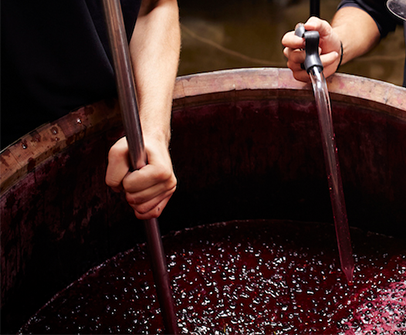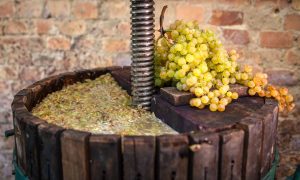Before you market your wine, you need to know the chemical composition of your wine.
Knowledge of the content of individual ingredients is necessary to assess:
– quality levels
– nutritional values
– health correctness
– wine safety

Technological reasons for recognizing the content and mutual ratios of individual ingredients are needed due to:
– recognition of samples of possible shortcomings and shortcomings and ways of their elimination / stopping
One of the important parameters that must be continuously monitored in wine are
volatile acids.
Volatile acids in wine are formed as secondary products of alcoholic fermentation or in the process of wine spoilage.
They affect the sensory properties of wine and are indicators of biological (in) stability of wine. Under certain conditions (such as heating) it evaporates from the wine. The total share of volatile acids is expressed as acetic acid because it accounts for 99% of all volatile acids in wine.
The origin of acetic acid in wine
2. Secondary product of alcoholic fermentation:
a) dismutation of acetaldehyde
b) during fermentation: yeasts, temperature, sugar content, air access
3. Biodegradation of citric acid
4. After alcoholic fermentation – during storage of wine
a) oxidation of ethanol with oxygen from the air
b)larger quantities occur as a result of some spoilage caused by bacteria (octicavost, wine flower …)
Healthy wine
contains 0.3-0.6 g / L
less often up to 1 g / L
Rotten wine
contains 2-3 g / L
2-3 g / L
According to the Ordinance on wine, the maximum is allowed:
1.1 g / L acetic acid
– wine with a label of controlled origin
1 g / L acetic acid
– wine with more than 10% vol alcohol
for each vol. % alcohol is allowed another + 0.06 g / L acetic acid
Other volatile acids in wine: propionic acid, butyric acid, valeric acid, then caproic, caprylic, capric, pelargonium, lauric, etc.
For measuring volatile acid in wine there are several analytical methods. Hanna has covered them and we can easily show you how to master those methods.
1. Measurement of volatile acids using a titrator
Method for the determination of volatile acidity in wine, by titration of a distillate that is collected from a steam distillation apparatus (Volatile Acid / Cash Still). The results are expressed in g/L of acetic acid.
HI931
Automatic Potentiometric Titrator
The HI931 Automatic Titrator is the answer to your dedicated titration needs. Fully customizable, the HI931 delivers accurate results and intuitive user experience, all in a compact package. Titrate for a variety of measurements at the push of a button including acids, bases, redox, and selective ions. With no additional programming upgrades to purchase, you can start measuring right away.
- Small footprint so you can fully optimize your benchtop and increase productivity.
- Unmatched 40,000-step dosing pump for small volumes of titrant to help you achieve a very precise endpoint for greater consistency.
- Perfect for dedicated titration needs.
The core of enzymatic methods is the property of the enzymes to catalyse specifical chemical reaction with certain metabolites. The benefit of this kind of analytical method is that can be applied with no major modification to the analysis of drinks.
With this methods you can measure acetic acid and acetaldehyde.
HI801
Spectrophotometer Iris
Customize your methods, take a wide range of measurements, and feel confident in your testing accuracy with iris.
- Iris features precise wavelength selection between 340 nm to 900 nm for complete method compliance and accuracy that is necessary in industries like professional laboratories, water treatment facilities, wineries, and more.
- Results are consistent and accurate regardless of throughput with the high quality and uniquely designed optics system.
- Customization options include multiple cuvette shapes and sizes, custom calibration curves, and methods.
Nives Vinceković Budor,mag.ing.chem.ing.






